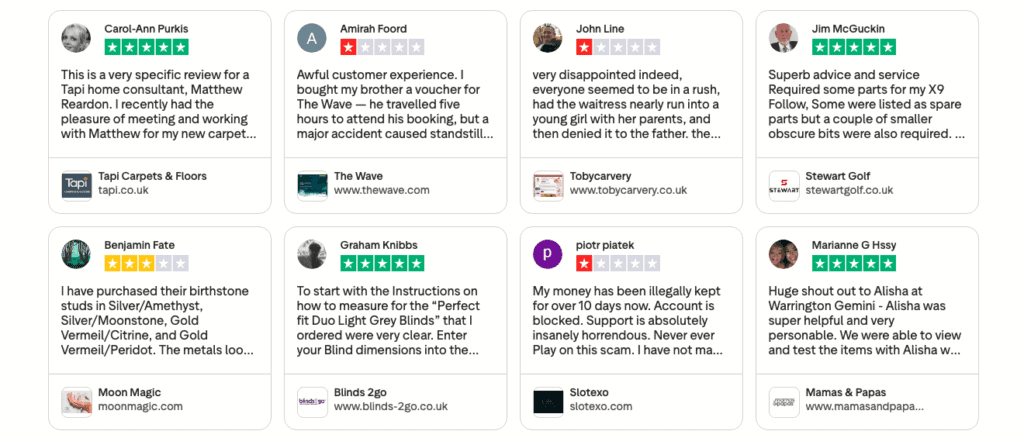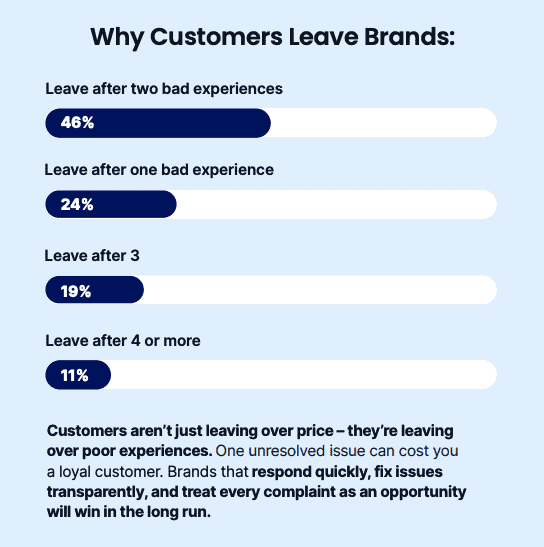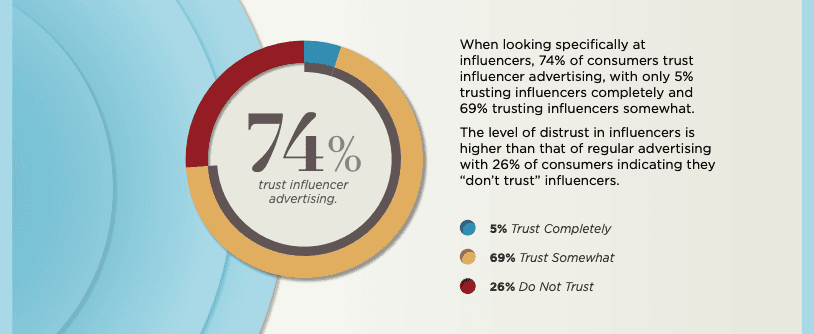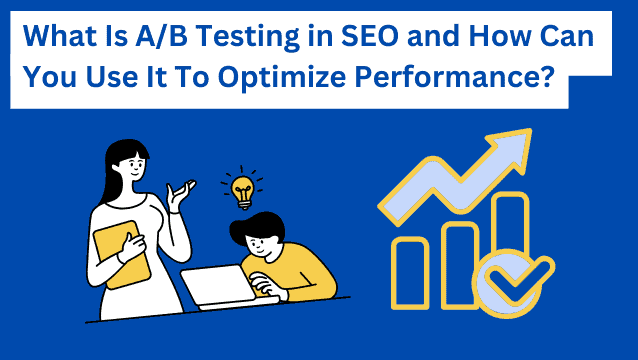What does it take to carve out a space for your brand in your industry? Ultimately, your brand’s niche and target market are not what matters. Instead, ensuring success necessitates a strategic approach to digital marketing and sales.
Look at how consumers make buying decisions. You’ll discover that social proof plays a big role in directing their behavior.
But here’s the truth. Consumers are consistently seeking out new social proof formats. They want to ensure they’re making the right buying decisions. So, you need to stop using outdated methods to capture people’s attention. They’re no longer enough to differentiate your brand from its growing competition.
Want to stand out in 2025 and beyond? In that case, you need to embrace new methods to build trust and influence purchasing decisions. In fact, the most effective way to achieve this would be to focus on brand credibility. Not virality.
This guide will take a deep dive into new social proof. It will explore the relationship between credibility and virality. Plus, it will study how the former boosts trust and how to use it to drive conversions. Let’s get into it.
What is social proof, and how does it work?

We’ll get into the nuanced differences between credibility and virality and their role in influencing consumer behavior in a minute. But first, let’s talk about what social proof is.
The concept first appeared in Robert Cialdini’s book Influence: Science and Practice. In the book, the author describes social proof as a psychological and social phenomenon, where most people look to others for cues on how to behave.
This occurrence is most common in situations where decision-makers feel out of their depth. It usually relies on the assumption that others possess more knowledge about the situation (and are thus more competent to make the right decision).
So, what about sales and marketing?
In such a setting, social proof refers to any type of content that generates brand or product visibility. Moreover, content format contributes to consumers’ heightened willingness to invest in a solution.
Virality vs. credibility
What’s the first thing you think of when discussing social proof?
For most business owners, it’s star ratings and customer reviews. And it is true. These short-form types of content are some of the simplest methods for building brand and product confidence. But they’re far from being the only methods of earning customer trust.
In fact, there are two distinct types of social proof to boost consumers’ purchase intent. These include virality and brand credibility.

At their core, both of these social cues aim to reach similar results. They support a heightened interest (and willingness to invest in) specific solutions. But how they arrive at that outcome varies quite considerably.
On the one hand, credibility testifies to brand authority. It is a piece of evidence about a company’s experience, expertise, and competence to handle customer demands. It’s one of the most important factors people consider during the typical buyer’s journey.
On the other hand, virality is more of a social signal. It shows that a solution is popular, relevant, and valuable. As a result, it affects consumers’ desire to engage with a product/brand.
How credibility and virality impact consumer behavior and purchase intent
Both social proof formats have a positive influence on consumer behavior. Especially when aiming to boost sales. But their role in driving long-term business success can be quite different.
Ultimately, this comes down to two different success pathways:
- building your brand’s reputation
- awakening your audience’s fear of missing out (FOMO)

In practice, FOMO can be greatly effective in inspiring consumers to buy, especially on social media. After all, most people make buying decisions based on subconscious factors. These include both positive and negative emotions.
So, if your product’s virality causes your prospects to feel like they might miss out on an opportunity to reach a goal, be part of the it crowd, or resolve a pain point, it can be a tremendous motivator for your prospects to take action sooner rather than later.
The issue with virality, however, is that it can be a double-edged sword.
Yes, it can and (usually) does boost conversions. But it can also deteriorate brand trust (and customer loyalty). That’s especially likely if your buyers don’t appreciate the value they’ve received from their purchase.
Credibility, on the other hand, is all about gradually building brand and product trust by focusing on consumer education.
Because it relies on facts, it’s not just a reliable method for consumers to make buying decisions. It’s also a verifiable element. This means that it plays an active role in the evaluation stage of the customer journey, where buyers seek information to make the best possible buying decision.
Additionally, it’s worth noting that brand credibility isn’t just a nice-to-have for most consumers. It’s an important prerequisite for even considering buying from a business.
Furthermore, research from Edelman clearly demonstrates that brand trust ranks among the top three factors for convincing people to buy a product. In fact, it’s equally important to product quality and value for money.

How to use social proof to highlight brand credibility and earn customer trust
So, you understand the difference between credibility and virality.
But how do you use trust to influence buyer behavior? And is it truly that important to focus on brand trust vs. virality? Or is there room in a successful marketing strategy for both of these formats of social proof?
The truth is that the ideal type of social proof for your brand depends on several factors. These include:
- the industry and niche in which you operate
- the platform you’re using to distribute content (your site vs. social media)
- the amount of competition you’re trying to stand out against
- your ideal customers’ priorities
- The buyer’s position in the sales funnel
Think about it this way. Professional B2B buyers won’t consider virality when choosing what products to buy. End consumers shopping for items like make-up or insulated water tumblers might.
The strategies below will provide you with some pointers on why credibility tends to work better for building trust that can boost conversion rates and customer retention.
Furthermore, we’ll mention a couple of smart ways to use virality in a way that can build brand and product trust. These insights will allow you to extract the most out of both social proof formats.
Use authentic story-driven customer testimonials to highlight your brand’s experience and expertise
Right now, there’s an ongoing epidemic of diminishing trust. So, getting prospects to have faith in your value propositions can be a genuine challenge.
Check out the latest research from Forrester. It suggests that, despite being increasingly exposed to digital advertising, one-in-five people don’t actually trust ads. In fact, older generations are far more skeptical than younger consumers.

So, what’s one of the most effective methods of building brand credibility and engaging your target audience? It is to focus on authenticity.
Try prioritizing messages that are genuine, relatable, and relevant to your audience’s unique expectations. That way, you can convince potential customers to pay attention to your brand’s messaging. More importantly, this tactic can highlight your brand’s experience and expertise, which are crucial for earning your target audience’s trust.
So, how do you do this in practice? Well, try to explore the opportunity to tell authentic stories about your brand’s successes in resolving customer pain points.
For example, RE Cost Seg does this beautifully. Check out the hero-section social proof video on its homepage.
In this resource, the brand’s founder, employees, and satisfied customers share unique and valuable insights into how the company works. Additionally, they share why that should matter to potential prospects. The video is a straightforward type of social proof. However, by prioritizing authenticity in building credibility, RE Cost Seg guarantees that its value propositions resonate with its ideal customers.
More importantly, this tactic contributes to the relatability of the content on the brand’s homepage. This enables RE Cost Seg to prove to first-time web visitors that it is the right address for resolving their real estate cash flow pain points.

Prioritize veracity over grandiosity
Creating hype around your solutions and their effectiveness can be a great way to engage new customers. But this virality-based marketing strategy has one big downside. It’s rather ineffective at managing customer expectations.
You see, consumers may react positively to grandiose promises. But failing to deliver can cause serious harm — both to customer satisfaction and your brand reputation.
Just look at the top reason people stop buying from brands. Survey data suggests that 24% of people won’t return to a brand following a single poor experience.

In other words, gaining traction within your industry may require a more up-to-date format of social proof. Not just virality.
One option would be to prioritize veracity and authenticity in your brand’s messaging. Doing so can effectively create attractive content to engage your ideal customers. Plus, this approach will also establish authentic brand credibility. That’s an essential prerequisite for converting and retaining customers.
Pergola Kits USA is an exceptional example of what this tactic looks like in real life. This brand prides itself on offering a variety of high-quality solutions to meet customer needs. However, it also knows that picking the best option from a multitude of choices can be challenging for non-expert customers. That’s why it incorporates user-generated content into its sales content.
By doing so, Pergola Kits shows off the beauty and quality of its products. Much more importantly, it does so by focusing on credibility first. This makes web visitors extremely likely to perceive the business as trustworthy. Plus, it encourages them to decide to invest in one of these solutions.

Pay attention to verifiability
Data, numbers, media mentions, awards, and accolades. These are all exceptional formats of social proof for boosting brand credibility. Why? Because they’re (usually) easy to verify.
Presenting your audience with proof of your expertise and dedication to customer success is excellent for earning their trust.
But do you really want to drive the message home? In that case, make sure that they can check (and verify) that these trust-building page elements are genuinely true.
The good news is that adding a dose of verifiability to your social proof isn’t that difficult.
You can simply embed customer ratings and customer reviews from third-party websites (like Google, Trustpilot, Yelp, or Tripadvisor). It’s a marvelous first step toward boosting brand reliability. Or you can produce case studies to show off your process and earn your customers’ trust via that method.
For example, check out how DialMyCalls incorporates this strategy into its Emergency Mass Notification page. On the one hand, the online reviews and ratings testify to the brand’s competence at resolving a specific customer pain point. On the other hand, all the social proof elements are clickable, making it easy for prospects to check their validity.

Use social proof as a differentiator in competitive industries and niches
In some cases, using social proof for business success isn’t simply about demonstrating credibility or removing buyers’ conversion obstacles. Instead, it’s all about differentiating your brand from its competitors.
The typical buyer’s journey consists of three stages:
- Awareness
- Evaluation
- Purchase
(There’s also the post-purchase stage, which transforms the funnel into a cycle, but that’s a topic for a different occasion).
During these customer journey stages, consumers seek out different types of content. So, if your prospects are populating the evaluation stage of the funnel, they’re almost guaranteed to compare and contrast your offer to something else in the market.
In these cases, one of the best methods to utilize social proof is to highlight the unique benefits your solutions provide that other options don’t.
To see what this can look like in practice, check out PerformanceLab.
This brand doesn’t directly compare its offer to competitor solutions. However, it does use social proof and verifiable data. In doing so, it:
- demonstrates that its nutritional supplements deliver advanced ingredient formulas
- calls attention to its third-party tested and validated ingredients
- emphasizes continually updated formulations
- establishes brand and product credibility and helps PerformanceLab stand out in an otherwise competitive industry

Rely on established industry voices/social media influencers to boost credibility
Finally, as you explore opportunities to use social proof for earning customer trust, don’t underestimate the power of influencer voices.
Sure, influencer marketing may not have the same conversion impact it once did. Nevertheless, identifying the personas your ideal customers do trust and employing them to build brand and product awareness can still lend a healthy dose of credibility to your brand.

Of course, the ideal way to do this is not to try to covertly advertise your solutions. Instead, explore opportunities to use your collaborators’ credibility to show that your brand is worthy of customer trust.
For instance, check out IceCartel. You’ll see that the brand proudly features a “worn by celebrities” section on its homepage.
By doing this, IceCartel isn’t just creating hype around its jewelry and hoping that some of that virality results in conversions. It’s using the reach and influence of these voices to show that its products are worn by some of the biggest names in hip-hop. In doing so, the brand is simultaneously:
- boosting product awareness
- positioning its products as a great buy for those seeking to emulate the music scene’s vibe

Final thoughts on using social proof for boosting brand credibility
Your first instinct on reading this guide may be to completely shift your focus from creating potentially viral content to incorporating social proof into your digital marketing strategies. But that could be a mistake.
Yes, social proof is irreplaceable in boosting brand trust, removing consumers’ conversion obstacles, and getting your audience to choose your brand over your competitors.
But without (at least some degree of) virality, your reach may suffer. And that significantly diminishes your playing ground, reducing your chances of boosting sales.
So, if you’re looking for a fresh way to use social proof for business success, aim for a healthy balance of the two. Yes, center your branding around credibility, reliability, and trust. But also use viral content as proof of demand for your solutions.
At the end of the day, a little bit of hype can go a long way — if nothing else, in awakening your prospect’s fear of missing out and encouraging them to move through the sales funnel at a faster pace.


